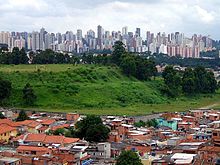https://en.wikipedia.org/wiki/Spanish_language_in_the_United_States
https://en.wikipedia.org/wiki/Spanish_language
webapp.lingua.ly/
double click on a word to get translation
lingq.com/
livemocha.com
Romance languages are spoken, primarily Spanish and Portuguese
Mexico, Central America, Caribbean, South America
Spanish is spoken as first language by about 60% of the population, Portuguese is spoken by about 34% of the population and about 6% of the population speak other languages
Spanish is the official language of most of the rest of the countries on the Latin American mainland (Spanish language in the Americas), as well as in Cuba, Puerto Rico (where it is co-official with English), and the Dominican Republic. French is spoken in Haiti and in the French overseas departments ofGuadeloupe, Martinique and Guiana, and the French overseas collectivity of Saint Pierre and Miquelon; it is also spoken by some Panamanians of Afro-Antillean descent.
The vast majority of Latin Americans are Christians, mostly Roman Catholicsbelonging to the Latin Rite.[55] About 70% of the Latin American population consider themselves Catholic.[56]
Migration[edit]
Due to economic, social and security developments that are affecting the region in recent decades, the focus is now the change from net immigration to netemigration. About 10 million Mexicans live in the United States.[57] 28.3 million Americans listed their ancestry as Mexican as of 2006.[58]
Inequality[edit]
Poverty continues to be one of the region's main challenges; according to theECLAC, Latin America is the most unequal region in the world.[105] Inequality is undermining the region's economic potential and the well-being of its population, since it increases poverty and reduces the impact of economic development on poverty reduction.[106] Children in Latin America are often forced to seek work on the streets when their families can no longer afford to support them, leading to a substantial population of street children in Latin America.[107] According to some estimates, there are 40 million street children in Latin America.[108]


No comments:
Post a Comment